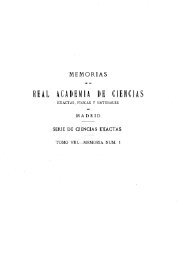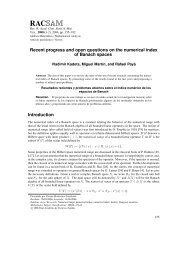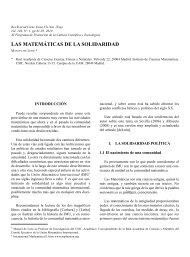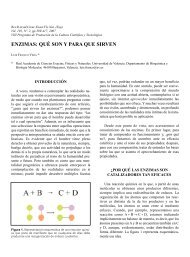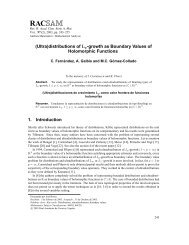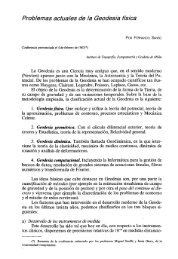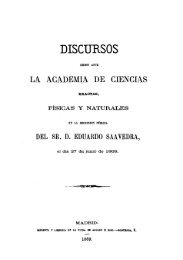The water footprint and virtual water exports of Spanish tomatoes
The water footprint and virtual water exports of Spanish tomatoes
The water footprint and virtual water exports of Spanish tomatoes
- No tags were found...
You also want an ePaper? Increase the reach of your titles
YUMPU automatically turns print PDFs into web optimized ePapers that Google loves.
26 THE WATER FOOTPRINT OF TOMATO PRODUCTIONFIGURE 8. Yearly average green, blue <strong>and</strong> grey <strong>water</strong> <strong>footprint</strong> (WF)per production system <strong>of</strong> the main producing provinces (hm 3 )Source: Own elaboration.ance data used for the calculation <strong>of</strong> the grey <strong>water</strong> <strong>footprint</strong>did not distinguish between the different productionsystems, being the resulting grey <strong>water</strong> <strong>footprint</strong>s thereforeinversely proportional to the yield. It must be noted thatthese results are given in terms <strong>of</strong> l/kg.When analysing the <strong>water</strong> <strong>footprint</strong> in terms <strong>of</strong> total cubicmeters, the tomato <strong>water</strong> <strong>footprint</strong> is very concentrated ina few productive areas. Figure 8 represents the green, blue<strong>and</strong> grey <strong>water</strong> <strong>footprint</strong> <strong>of</strong> the eight most productive <strong>Spanish</strong>provinces per production system <strong>and</strong> their average annual<strong>water</strong> <strong>footprint</strong>. In accordance with Figure 6, Badajoz<strong>and</strong> Almería are the two provinces with the highest total<strong>water</strong> <strong>footprint</strong> (hm 3 ).



